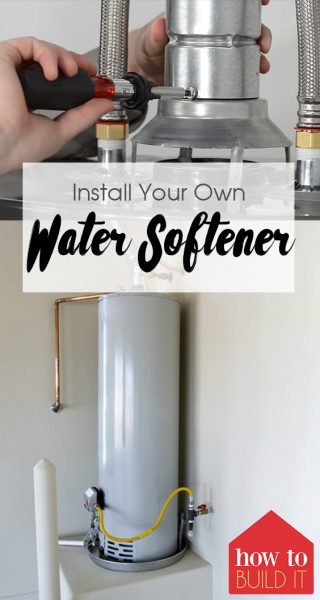A Comprehensive Guide to Installing a Water Softener
Introduction
Hard water is a common issue that affects the quality of water in many households. It can cause problems such as scale buildup in pipes, decreased soap lathering, and the wearing out of appliances like water heaters and dishwashers. To combat these issues, many homeowners opt for water softeners. Installing a water softener may seem like a daunting task, but with the right knowledge and tools, it can be a manageable DIY project. In this comprehensive guide on how to install a water softener, we will walk you through the step-by-step process of installing it in your home.


Table of Contents
- Understanding Water Softeners
- 1.1 What is Hard Water?
- 1.2 What is a Water Softener?
- 1.3 Why Install a Water Softener?
- Choosing the Right Water Softener
- 2.1 Types of Water Softeners
- 2.2 Sizing Your Water Softener
- 2.3 Location for Installation
- Gathering the Necessary Tools and Materials
- 3.1 Tools
- 3.2 Materials
- Preparing for Installation
- 4.1 Shutting Off Water Supply
- 4.2 Drainage Considerations
- 4.3 Electrical Requirements
- Installing the Water Softener
- 5.1 Placing the Softener
- 5.2 Connecting Pipes
- 5.3 Electrical Connections
- Initial Setup and Programming
- 6.1 Setting the Regeneration Schedule
- 6.2 Adding Salt
- 6.3 Initial Flush
- Maintenance and Troubleshooting
- 7.1 Regular Maintenance
- 7.2 Troubleshooting Common Issues
- Conclusion
1. Understanding Water Softeners
1.1 What is Hard Water?
Hard water is water that contains a high concentration of minerals, primarily calcium and magnesium. These minerals can accumulate in pipes, appliances, and fixtures, causing problems like reduced water flow, soap scum, and scale buildup.
1.2 What is a Water Softener?
A water softener is a device designed to remove hardness minerals from water. It operates by using ion exchange technology to replace calcium and magnesium ions with sodium ions, effectively softening the water.
1.3 Why Install a Water Softener?
Installing a water softener offers several benefits, including:
- Extended Appliance Lifespan: Softened water helps appliances like water heaters and dishwashers last longer by reducing mineral buildup.
- Reduced Energy Costs: Appliances operate more efficiently with softened water, resulting in lower energy bills.
- Improved Water Quality: Softened water improves the lathering of soap and the overall quality of drinking water.
- Less Scale Buildup: Softened water reduces scale buildup in pipes, faucets, and showerheads.
2. Choosing the Right Water Softener
2.1 Types of Water Softeners
There are several types of water softeners available, including:
- Salt-Based Ion Exchange Softeners: These are the most common type and use salt to regenerate the resin beads that remove hardness minerals.
- Salt-Free Water Conditioners: These systems don’t remove minerals but prevent them from adhering to surfaces.
- Dual-Tank Water Softeners: These have two tanks, ensuring continuous soft water supply even during regeneration.
- Magnetic or Electronic Water Conditioners: These devices claim to reduce the effects of hard water but may not provide the same level of softening as traditional systems.
Choose the type that best suits your needs and budget.
2.2 Sizing Your Water Softener
To determine the right size for your water softener, consider factors such as water hardness, daily water usage, and the number of people in your household. Most softeners are rated by grain capacity, with larger capacities suitable for larger households and higher water hardness levels.
2.3 Location for Installation of Your Water Softener
Select an appropriate location for your water softener. It should be installed indoors, near the water main, and close to a power source. Ensure that the chosen location allows for easy access during maintenance and regeneration.
3. Gathering the Necessary Tools and Materials
3.1 Tools
Before starting the installation, gather the following tools:
- Adjustable wrench
- Pipe cutter
- Tubing cutter
- Pipe wrench
- Screwdrivers (flathead and Phillips)
- Tape measure
- Hacksaw
- Plumber’s tape
- Pipe fittings and connectors
3.2 Materials
You’ll also need the following materials:
- Water softener unit
- Bypass valve
- Copper or plastic pipes
- Pipe fittings (elbows, couplings, adapters)
- PVC drain pipe
- Electrical outlet and wiring (if required)
- Salt (for salt-based softeners)
- Brine tank
4. Preparing for Installation
4.1 Shutting Off Water Supply
Before you start the installation, turn off the main water supply to your home. This prevents any water from flowing while you work on the plumbing.
4.2 Drainage Considerations
Plan a suitable drainage route for the brine wastewater. This water will carry the removed minerals and must be drained away properly. It can be connected to a floor drain or an existing drain line.
4.3 Electrical Requirements
If your water softener requires electrical power, ensure that there’s a nearby electrical outlet and make arrangements for the wiring if necessary. Follow all safety guidelines when working with electricity.
5. Installing the Water Softener
5.1 Placing the Softener
Place the water softener unit in the chosen location. Ensure it’s level and stable. Leave enough space for future maintenance and easy access to the control panel.
5.2 Connecting Pipes
Connect the water softener to the main water supply line using the bypass valve. This allows you to divert water around the softener when needed. Use appropriate pipe fittings and connectors, and make sure all connections are secure.
5.3 Electrical Connections
If your water softener requires electricity, connect it to the nearby electrical outlet following the manufacturer’s instructions. Ensure the power is off when making electrical connections.
6. Initial Setup and Programming
6.1 Setting the Regeneration Schedule
Program your water softener according to the manufacturer’s instructions. Set the regeneration schedule based on your water usage and hardness level. This schedule determines when the softener will regenerate and flush out the collected minerals.
6.2 Adding Salt
If you have a salt-based water softener, add the appropriate type of salt to the brine tank. Follow the manufacturer’s recommendations for the type and amount of salt needed.
6.3 Initial Flush
After programming and adding salt, initiate the first regeneration cycle to flush out any debris in the resin tank. This step ensures that your water softener is functioning correctly.
7. Maintenance and Troubleshooting
7.1 Regular Maintenance
To keep your water softener running smoothly, perform regular maintenance tasks such as:
- Checking salt levels and replenishing as needed.
- Cleaning the brine tank periodically.
- Inspecting and cleaning the resin tank and screen.
- Monitoring for leaks and addressing them promptly.
7.2 Troubleshooting Common Issues
Common issues with water softeners include low water pressure, salt bridging, and resin tank fouling. Consult the manufacturer’s manual for troubleshooting guidance, and if necessary, seek professional assistance.
8. Conclusion
Installing a water softener is a valuable investment in your home’s water quality and the longevity of your appliances. With the right tools, materials, and knowledge, you can successfully install a water softener as a DIY project. Remember to follow the manufacturer’s instructions closely and perform regular maintenance to ensure optimal performance. Say goodbye to the woes of hard water and enjoy the benefits of soft, quality water in your home.
